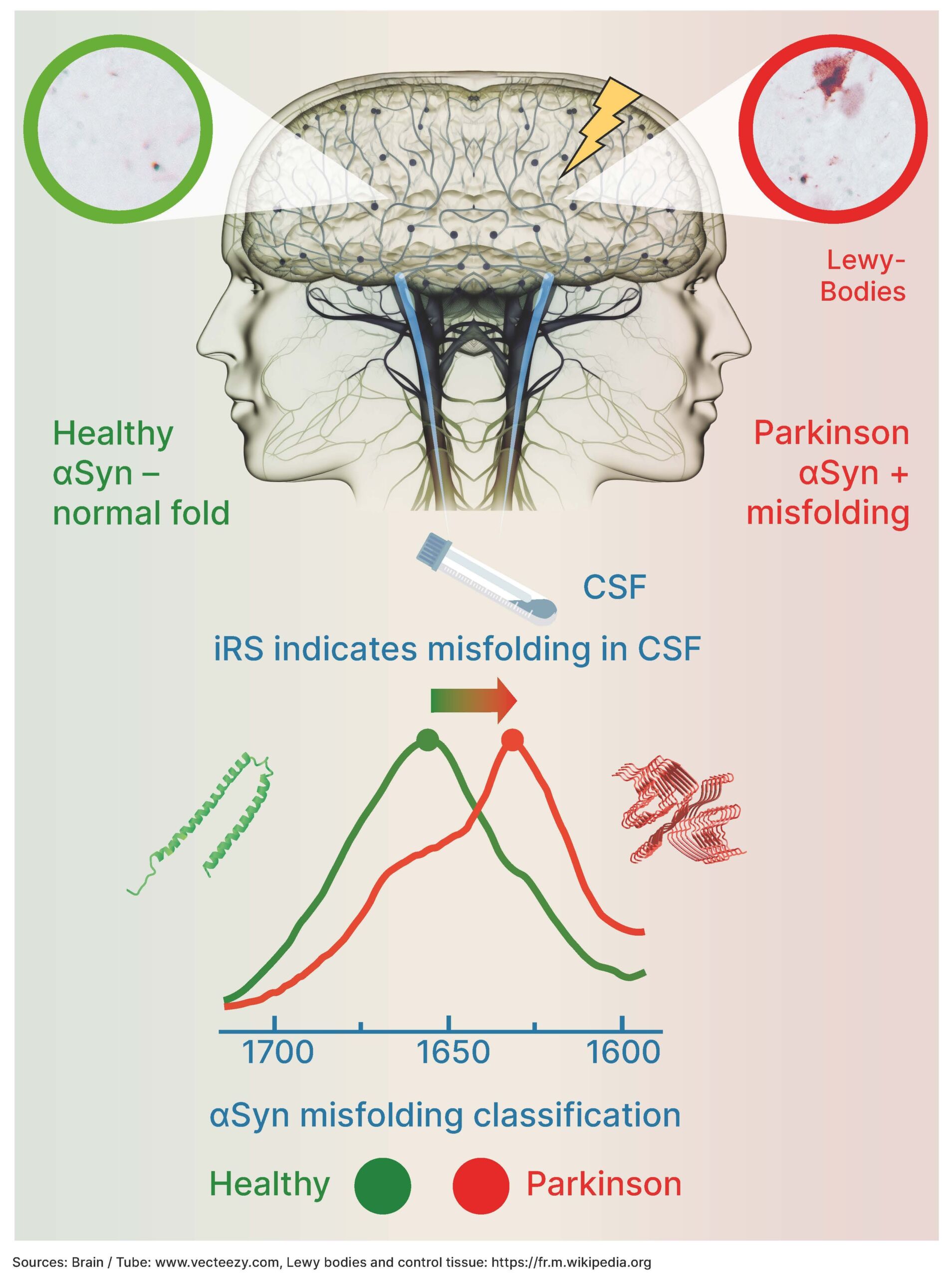An innovative method for precise Parkinson's diagnosis
Unmet medical need in Parkinson’s diagnosis

Despite significant advances in the treatment of Parkinson’s disease, the condition remains a considerable medical challenge. In this context, the term “unmet medical need” describes gaps in current care and treatment that are not adequately covered by existing diagnostics, medications or interventions.
Although some therapies alleviate many motor symptoms, they often lose their effectiveness as the disease progresses and cause complications themselves. In addition, non-motor symptoms – such as cognitive impairment, depression, sleep disorders and autonomic dysfunction – often remain inadequately treated. There is an urgent need for disease-modifying therapies that can slow down or halt the progression of the disease.
The basic prerequisite for this is a precise test that can diagnose the disease with a high degree of accuracy and distinguish it from other conditions.
iRS enables initial approaches to patient stratification
Initial subgroup analyses demonstrate the potential of iRS technology to differentiate between idiopathic and atypical cases of Parkinson’s disease.High diagnostic accuracy for Parkinson’s disease and MSA using iRS
The iRS analysis achieved an AUC of 0.90 and identified Parkinson’s and MSA cases with 97% sensitivity and 92% specificity.Direct detection of misfolding paves the way for the future
In the future, this test should also be able to be used for early detection.
Schuler et al. (2025): Alpha-synuclein misfolding as a fluid biomarker for Parkinson’s disease and synucleinopathies measured with the iRS platform. In: EMBO Mol Med; 17: 1203 – 1221 https://doi.org/10.1038/s44321-025-00229-z
-
The betaSENSE method was recently used in a study conducted in cooperation with the Centre for Protein Diagnostics and clinics in Bochum and Kassel.
-
A total of 134 CSF samples from individuals with Parkinson's disease, atypical cases and controls without motor neuron disease were analysed in a blinded manner.
-
Direct measurement of all αSyn conformations in CSF enabled spectral analysis of structural changes Controls: α-helical / random coil
PD & MSA: β-sheet-dominated -
By introducing two thresholds, the groups with low and high misfolding of αSyn could be clearly separated from each other with a sensitivity of 97% and specificity of 92%.